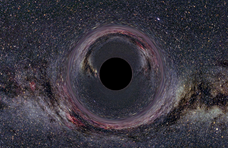In desperate times no idea is too mad and sinking ships beg for a solution. Some of the best scientific minds
were put to the job of making vessels invisible to the enemy.
During World War II the Germans developed an underwater mine that exploited an effect of the Earth’s magnetic
field. A highly sensitive detonating device in the mine would detect the slight concentration in that field
caused from the ferrous mass of a passing ship’s hull. The British Navy was losing ships quickly from these
mines and came up with an ingenious method to achieve a form of magnetic ‘invisibility’. They installed copper
coils within the ships to induce just enough of an opposite field to negate the change in magnetism that their
hulls were causing. This induced magnetism could also be reversed, to have a north-pole bias, when traveling in
the Southern Hemisphere. Although the Navy tried to keep this technology secret many sailors were aware of it
because of procedures that had to be taken during its operation. But what other technologies were being developed
that they didn’t know about?
In 1943 witnesses supposedly saw something incredible. The USS Eldridge, a Navy destroyer escort, was stationed
at the Philadelphia Naval Shipyard in the US. According to accounts, a green ionic fog suddenly shrouded the
vessel and shortly after that the ship almost completely vanished from view. When it reappeared some of the
crew members were supposedly fused right into the metal of the ship or suffered severe side effects. According
to the story the Navy retried the experiment in October of that year with even more unbelievable results. This
time, it was said, the ship vanished completely in a flash of blue light and was teleported over 200 miles to
Norfolk, Virginia, where it sat in full view for some period of time. The vessel then vanished again and
reappeared in its original Philadelphia location, but with the same horrific results.

Explanations of the story were that the Navy first tried to achieve optical invisibility through the use of
some aspects of a Unified Field Theory that Albert Einstein was working on. Then, after the tragedy of that
failure, they scaled back the objective of the project and tried to effect only radar invisibility. The
equipment was not properly recalibrated, supposedly, leading to the bizarre consequences of that second attempt.
The story, as it’s told, is doubtful. Certainly there was science being conducted then that may never be known,
but teleportation and men fused into steel, still alive? In explanations of the story the experiment tried to
achieve invisibility by bending light rays around the ship using sophisticated electromagnetic fields. Is this
aspect plausible?
On October 19, 2006 scientists at Duke University's Pratt School of Engineering announced the demonstration
of the first working 'invisibility cloak'.
The experiment didn’t make anything like a ship disappear, and affected only the microwave region of the
electromagnetic spectrum, but it created the type of effect you would need for optical invisibility. It may
even be the effect that was sought after in the supposed Philadelphia Experiment.
The scientists created artificial composites using copper, called metamaterials. They arranged this material
into concentric coils, which would have the specific electromagnetic properties needed. This was determined
mathematically. When the test unit was complete they sent a beam of microwave radiation towards the unit and
it successfully warped the beam around the coil in a way that reformed the emerging pattern as though it had
never been obstructed.
The system only works on a 2 dimensional plane, and can’t manipulate the visible spectrum in the same way that
would be necessary, but it’s a practical beginning of what may be possible in the future. □
Duke University 'cloak' project web page
US Office of Naval Research - Philadelphia Experiment web page
